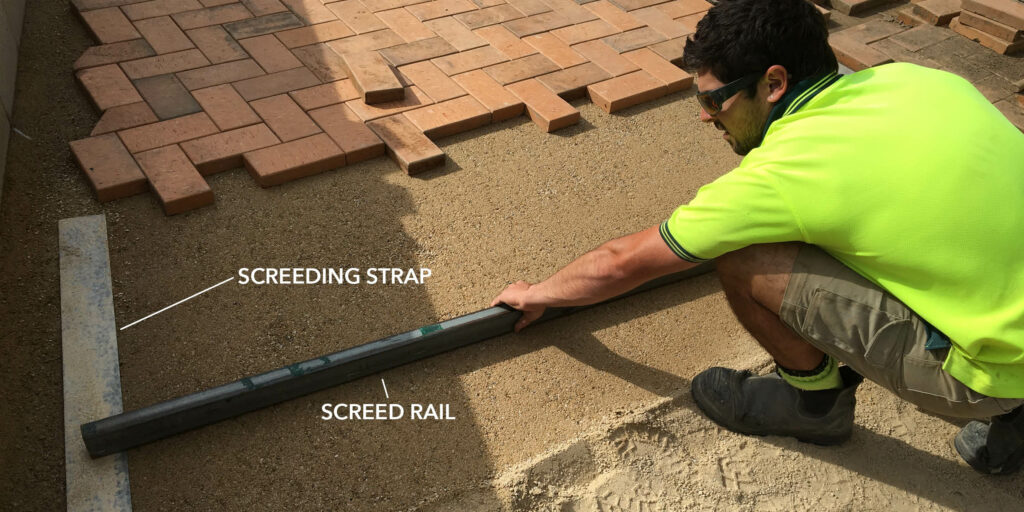
Paver Installation Safety Precautions: A Comprehensive Guide
Introduction
Paver installation can be a rewarding DIY project, but it’s crucial to prioritize safety throughout the process. Neglecting proper safety measures can lead to severe injuries, property damage, or even fatalities. This comprehensive guide outlines essential safety precautions to ensure a safe and successful paver installation.
Pre-Installation Safety
1. Site Preparation
- Clear the installation area of all obstacles, debris, and vegetation.
- Ensure the site has adequate drainage to prevent water accumulation.
- Mark utility lines and underground structures to avoid damage during excavation.
2. Excavation
- Wear appropriate personal protective equipment (PPE), including safety glasses, gloves, and a hard hat.
- Use sharp tools and dig carefully to prevent injury or damage to utilities.
- Shore up trench walls to prevent collapse, especially in unstable soil conditions.
Paver Handling and Installation
3. Paver Loading and Unloading
- Use a forklift or other mechanical equipment to load and unload heavy pavers safely.
- Wear gloves and safety shoes to prevent hand and foot injuries.
- Keep a safe distance from moving equipment and materials.
4. Paver Placement
- Set pavers on a stable and level base to prevent shifting or cracking.
- Use a rubber mallet or paver tamper to gently tap pavers into place.
- Avoid excessive force or hammering, which can damage the pavers.
5. Cutting Pavers
- Wear a dust mask and safety glasses when cutting pavers.
- Use a wet saw or angle grinder with a diamond blade for clean and precise cuts.
- Ensure the cutting area is well-ventilated to prevent dust inhalation.
Compaction and Finishing
6. Compacting Pavers
- Compact pavers using a plate compactor or vibratory roller to stabilize them.
- Start compaction from the edges and work towards the center.
- Ensure uniform compaction to prevent settling or uneven surfaces.
7. Joint Sanding
- Apply joint sand to fill the spaces between pavers and lock them in place.
- Use a broom or squeegee to distribute the sand evenly.
- Sweep excess sand away to prevent staining or discoloration.
8. Sealing Pavers
- Apply a sealant to protect pavers from stains, fading, and damage.
- Follow the manufacturer’s instructions for proper application and drying time.
- Ensure the sealant is compatible with the type of pavers installed.
Electrical Safety
9. Wiring and Lighting
- Hire a qualified electrician to install electrical wiring and fixtures.
- Use outdoor-rated materials and follow all electrical codes.
- Ensure proper grounding to prevent electrical shocks.
10. Water Features
- Install water features safely to prevent electrical hazards.
- Use a ground fault circuit interrupter (GFCI) to protect against electrical shock.
- Ensure all electrical connections are waterproof and protected from the elements.
Health and Environmental Precautions
11. Dust and Fumes
- Wear a dust mask to prevent inhalation of dust and fumes during cutting, grinding, and compaction.
- Ensure the work area is well-ventilated to minimize dust exposure.
12. Noise Pollution
- Use earplugs or noise-canceling headphones to protect hearing from excessive noise during cutting and compaction.
- Inform neighbors of potential noise levels and schedule work accordingly.
13. Heat and Sun Exposure
- Work during cooler hours of the day to avoid heat exhaustion or heat stroke.
- Drink plenty of fluids and take breaks in shaded areas.
- Wear sunscreen and protective clothing to prevent sunburns.
Emergency Preparedness
14. First Aid Kit
- Keep a well-stocked first aid kit on hand to treat minor injuries.
- Include antiseptic wipes, bandages, pain relievers, and other essential supplies.
15. Emergency Contacts
- Post emergency contact numbers in a visible location.
- Include the phone numbers of the local hospital, fire department, and police.
16. Fire Extinguisher
- Have a fire extinguisher nearby in case of electrical fires or other emergencies.
- Ensure it is the appropriate type for the materials being used.
Additional Safety Tips
17. Plan Ahead
- Plan the installation carefully and gather all necessary materials and equipment before starting.
- Read and follow manufacturer’s instructions for pavers and other materials.
18. Use Proper Tools
- Use the right tools for the job, such as a rubber mallet for tapping pavers and a wet saw for cutting.
- Ensure tools are in good working condition and sharp.
19. Take Breaks
- Take regular breaks to rest and avoid fatigue, which can lead to accidents.
- Stay hydrated and eat healthy snacks to maintain energy levels.
20. Clean Up
- Clean up the work area after installation to prevent tripping hazards or injuries.
- Dispose of materials properly and recycle or reuse whenever possible.
Conclusion
By following these comprehensive safety precautions, you can minimize the risks associated with paver installation and ensure a safe and successful project. Remember, safety should always be the top priority, and if you have any doubts or concerns, don’t hesitate to seek professional assistance. With proper planning and adherence to safety protocols, you can enjoy the beauty and durability of your paver installation for years to come.